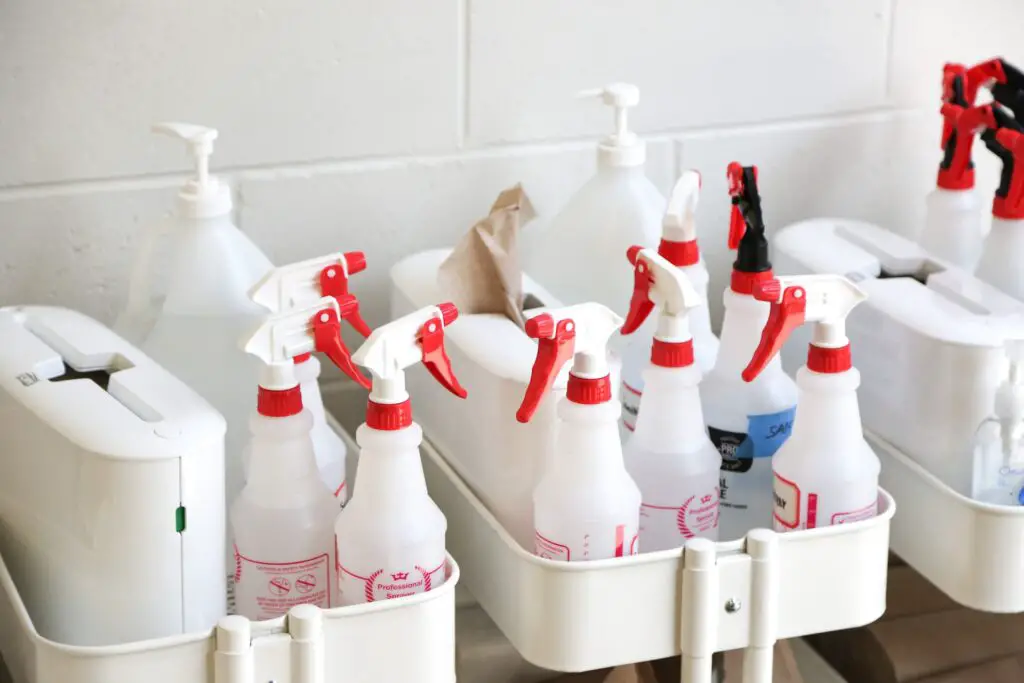Ensuring product safety from contamination is a crucial aspect for manufacturers worldwide. This practice not only guarantees the high-quality products we consume daily, but it’s also vital for the reputation of these companies and consumer trust in their products.
This article takes an in-depth look at this complex process, diving into the proven methods that effectively keep products safe and free from contaminants throughout their journey.
10 Ways Manufacturers Keep Products Safe from Contamination
Food safety is a top priority for large manufacturers. They implement various methods to ensure that their products are free from contamination. We’ll explore ten of these strategies.
1. Cleaning and Sanitizing Surrounding Areas
Cleaning and sanitizing are key strategies in maintaining a contamination-free manufacturing space. Manufacturers often use high-grade industrial cleaners to ensure all surfaces are kept clean. Moreover, sanitizing agents can be used to kill any unwanted microorganisms.
2. Disinfecting Using Electrolyzed Water
Electrolyzed water is an effective disinfectant that eliminates harmful pathogens without leaving any chemical residues. Companies like EAU Technologies are pioneering this technology, providing a safer, greener alternative to traditional decontamination processes in the industry.
3. Regular Inspections of Machines and Area
Regular inspections are an essential part of a manufacturer’s safety protocol. Through these assessments, hazards can be identified and addressed promptly. External compliance checks add an extra layer of assurance that manufacturing processes are adhering to the standard.
4. Temperature Control for Sensitive Items
Proper temperature levels help avoid bacterial and fungal growth, ensuring product longevity and safety. This could involve refrigeration for some products or maintaining a warm environment for others, depending on the specific requirements of the product.
5. Advanced Packaging and Control Processes
Manufacturers often employ advanced techniques, like vacuum sealing and the use of preservative gasses, to keep their products safe from contamination. These mechanisms create a protective barrier, preventing any potential contact with harmful external elements.
6. Contiguous Employee and Managerial Training
Well-trained employees are a critical factor in preventing product contamination. Manufacturers often provide comprehensive training programs to their staff. This ensures they understand handling procedures and how their actions can directly impact the safety of the products.
7. Enforcing Employee Hygiene Protocols
Promoting and enforcing excellent personal hygiene among employees is a key aspect of maintaining product safety. Measures may include regular and correct hand washing, the use of alcohol-based sanitizer, and even the implementation of shower-in and shower-out protocols.
8. Raw Material Monitoring and Sourcing
Ensuring the quality of raw materials is a fundamental step in the prevention of product contamination. Using proactive monitoring, manufacturers implement rigorous quality checks for the materials entering their facility and reject any that don’t meet their strict standards.
9. Air Quality Controls Inside the Business
Air quality controls represent another crucial measure to prevent contamination. Manufacturers often use advanced air filtration systems to eliminate potential airborne contaminants. Whether it’s dust, bacteria, or other pollutants, these systems ensure a safer and cleaner environment.
10. Regular and Prompt Equipment Maintenance
Regular equipment maintenance and calibration play a key role in averting potential contamination issues. Through timely inspections and preventive care, manufacturers are able to detect any irregularities and keep their machinery running optimally.
In Conclusion…
Protecting products from potential contamination is a complex endeavor, yet it’s an incredibly important process in manufacturing. We hope you now have a better understanding of what goes on behind the scenes to ensure the products we consume are safe and of high quality.
Taking responsibility as informed consumers also plays a role here. So, never hesitate to question and learn more about the products you use. Remember, knowledge empowers us to make well-informed choices that contribute positively to our health and well-being!

